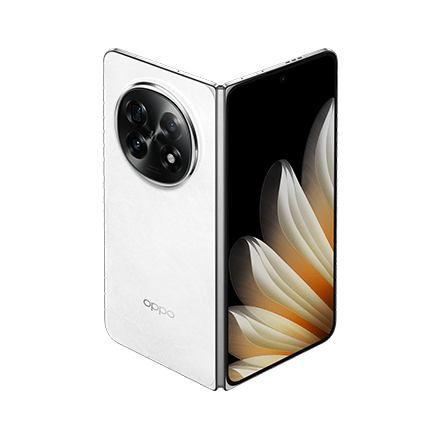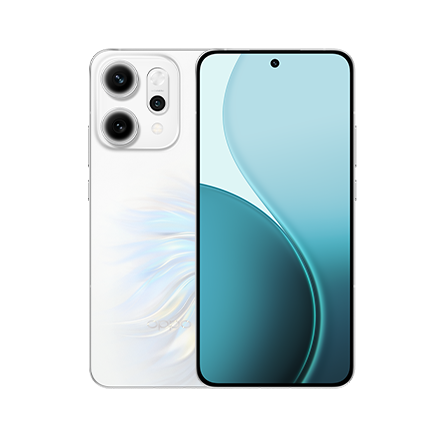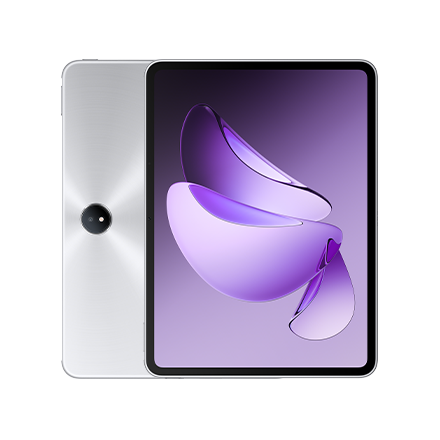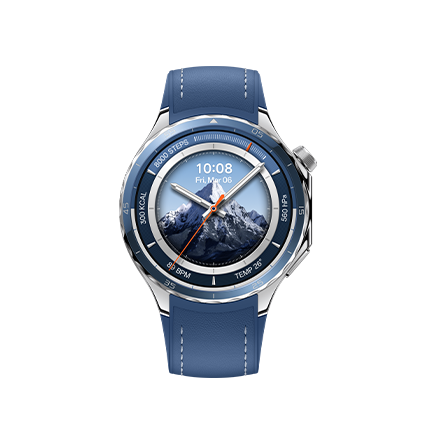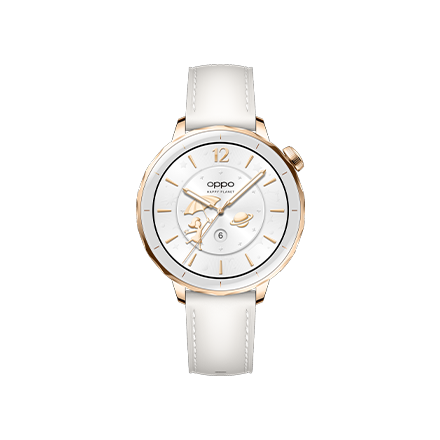OPPO Reno11 Series: The Portrait Expert

OPPO is at the forefront of portrait photography innovation, and the Reno Series, in particular, showcases just how far smartphone portrait photography has come in recent years.
There are 72 million Reno owners across 60 countries, ranging from casual photo takers to professionals, and one of these is renowned photographer Khairul Amin.
Read on as we explore OPPO's dedication to realising the best portrait shooting experience possible, and enjoy exclusive insights from Khairul Amin as he gets the perfect cover shot with actress, Amelia Henderson, for L'Officiel magazine using Reno11 Pro.
"The OPPO Reno Series is the best phone for taking portrait shots since it is known as the "Portrait Expert", a title that fits the device rather nicely. With professional-grade proprietary tuning and imaging configuration on par with a professional camera, it produces studio-calibre portrait effects with every shot." —Khairul Amin

Popularising a Portrait Focal Length
Telephoto cameras aren't just for zooming. Yes, they get you closer to subjects, but they also create a unique perspective when taking a portrait photo.
One key advantage is they help users get closer to a subject without needing to invade their personal space. Another advantage is an effect known as spatial compression. A portrait lens can appear to "compress" or shrink the subject in relation to a background, making the background look larger and closer, and creating a more intentional-looking photo.
Compared with a traditional wide-angle main camera, a telephoto camera can capture portrait shots with less perspective distortion and a greater sense of intimacy. This helps take portraits to the next level.
In fact, professional studio-level portrait photographers usually rely on a 50mm or 85mm telephoto lens to get the best portrait shots. The 50mm lens, casually referred to as the nifty 50, is also near to the perspective of a human eye, making it a favourite among pros.
To offer a better and more professional portrait shooting experience, starting with the Reno10 series, OPPO introduced its industry-leading Telephoto Portrait Camera, previously reserved for pro-grade flagship devices.
With its 47mm focal length, it's very close to the photographer-favourite 50mm telephoto focal length, and is perfect for distortion-free portrait shooting.
What the Photographer Says:
"The 2x optical zoom gives it a perfect focal length for portraits taken at, or near 50mm, and its algorithm produces bokeh effects comparable to those found in DSLRs, plus you can even adjust the amount of bokeh desired for your photos after the shoot." —Khairul Amin

From Focal Length to Sensor Technology
Reno10 Series also comes with a high-quality camera sensor–the 32MP IMX709–which OPPO worked together with Sony to engineer. With a larger 1/2.74-inch sensor size, it offers better image quality than competition–this puts the Reno Series at an advantage.
The IMX709 sensor also offers a further 60% increase in photosensitivity and 35% less noise than comparable traditional sensors thanks to its unique colour filter array, which features an RGBW structure, versus traditional RGGB sensors.
Reno11 Series: Next-Level Portrait Photography
For Reno11 Series, OPPO continues to drive innovation in smartphone portrait photography, with the line pioneering the new Ultra-Clear Portrait Camera System.
Both Reno11 and Reno11 Pro feature high-resolution 50MP main cameras with OIS and the 32MP Telephoto Portrait Camera with a 47mm equivalent focal length, which translates to a 2x zoom. These impressive cameras create powerful, versatile, professional-looking portrait opportunities at two distinct optical focal lengths.
To unlock true pro-grade portrait photography, Reno11 Pro also benefits from OPPO's next-gen computational photography suite–the flagship algorithm–HyperTone Imaging Engine. Pioneered for Find X6 Pro and Find N3, and refined for Reno11 Pro, it represents a breakthrough for the Reno series and smartphones at large.
 Without HyperTone (left) versus with HyperTone (right)
Without HyperTone (left) versus with HyperTone (right)Photos that might otherwise look washed out and uninspired are bursting with details, depth and confident, inviting colours.
By merging multiple uncompressed images in the RAW domain and applying AI-powered denoise and demosaic processing, OPPO's powerful HyperTone Imaging Engine significantly boosts image clarity, dynamic range, and colour richness. Users can expect true flagship quality portrait photography from Reno11 Pro.
What the Photographer Says:
"As the camera system uses computational photography to address common mobile photography concerns like distortion and image noise, it was truly mind-blowing. Clearer portraits are now achievable using only a mobile phone. Giving my portraits a more vibrant appearance." —Khairul Amin
OPPO Portrait Expert Engine
A great digital portrait is a combination of technology and aesthetics. With the Reno series, we work with professional portrait photographers from around the world to fine-tune the portrait shooting experience. The result is the powerful new OPPO Portrait Expert Engine.
For Reno11 Pro's Ultra-Clear Portrait Camera System in particular, a new Portrait Mode combines with AI Portrait Retouching to capture a world of skin tones, expressions, and treasured moments.
Portrait Mode
Especially popular for Reno photographers, OPPO has invested in creating a pro-grade portrait mode for Reno11 Pro. There's a stigma associated with poor Portrait Mode experiences which rely exclusively on beautification. These create artificial-looking photos. OPPO challenges the industry to expect more from Portrait Mode.
With Reno11 Pro, choose between two optical points of view when you fire up Portrait Mode–a wide 24mm focal length so multiple subjects shine across the scene, or a 2x, 47mm portrait to focus attention on a single subject.
Able to recognise a range of elements in a scene, Reno11 Pro maps layers accurately for a beautiful, realistic soft-focus background and gradual detail fall-off from a crisp, in-focus subject.
Choose an aperture between f/1.4–f/16 for a bokeh effect, flare patterns, and layering benchmarked against pro-grade DSLR lenses.
Loaded with identity, Reno11 Pro's Portrait Mode is tuned to accurately represent a subject's natural skin colours and features across a range of scenarios. OPPO's engineers flew to multiple countries, working with a global pool of photographers to fine-tune results to be as representative as possible.
What the Photographer Says:
"The 32MP telephoto camera that is just used for taking portraits–2x optical zoom gives it a perfect focal length for portraits taken at or near 50mm, and its algorithm produces bokeh effects comparable to those found in DSLRs, plus you can even adjust the amount of bokeh you desired for your photos after the shoot." —Khairul Amin

AI Portrait Retouching
OPPO's Facial Recognition matched with Subject/Scene Separation recognises diverse faces and a host of objects, so every element is naturally optimised. Skin Colour and Facial Feature Protection retain characteristic traits like moles or birthmarks while still capturing a flattering portrait.
Detail and dynamic range are also tuned specifically for portraits on Reno11 Pro. Upgraded Clarity, Stereoscopic Light and Shade Effects made possible by HyperTone Imaging Engine fuse Raw images to preserve details and colours across the entire scene. This is enhanced by an advanced Tone Mapping Algorithm that optimises lighting effects, colouring, and textures. Finally, Face Curve algorithm captures texture and a sense of story in highlights and shadows.
What the Photographer Says:
"I've taken both indoor and outdoor portraits with the camera, and the results have impressed me with their accuracy in terms of clarity, bokeh separation, and light and shadow balancing." —Khairul Amin
Conclusion
With this incredible harmony of hardware and software in-hand, OPPO Reno11 Series' powerful camera system and Reno11 Pro's next-generation flagship HyperTone Imaging Engine create a perfect combination for captivating portraits, whether you're a novice or a seasoned professional.
To find out more about Reno11 Pro and see Khairul Amin's photoshoot with Amelia Henderson, visit L'Officiel .


